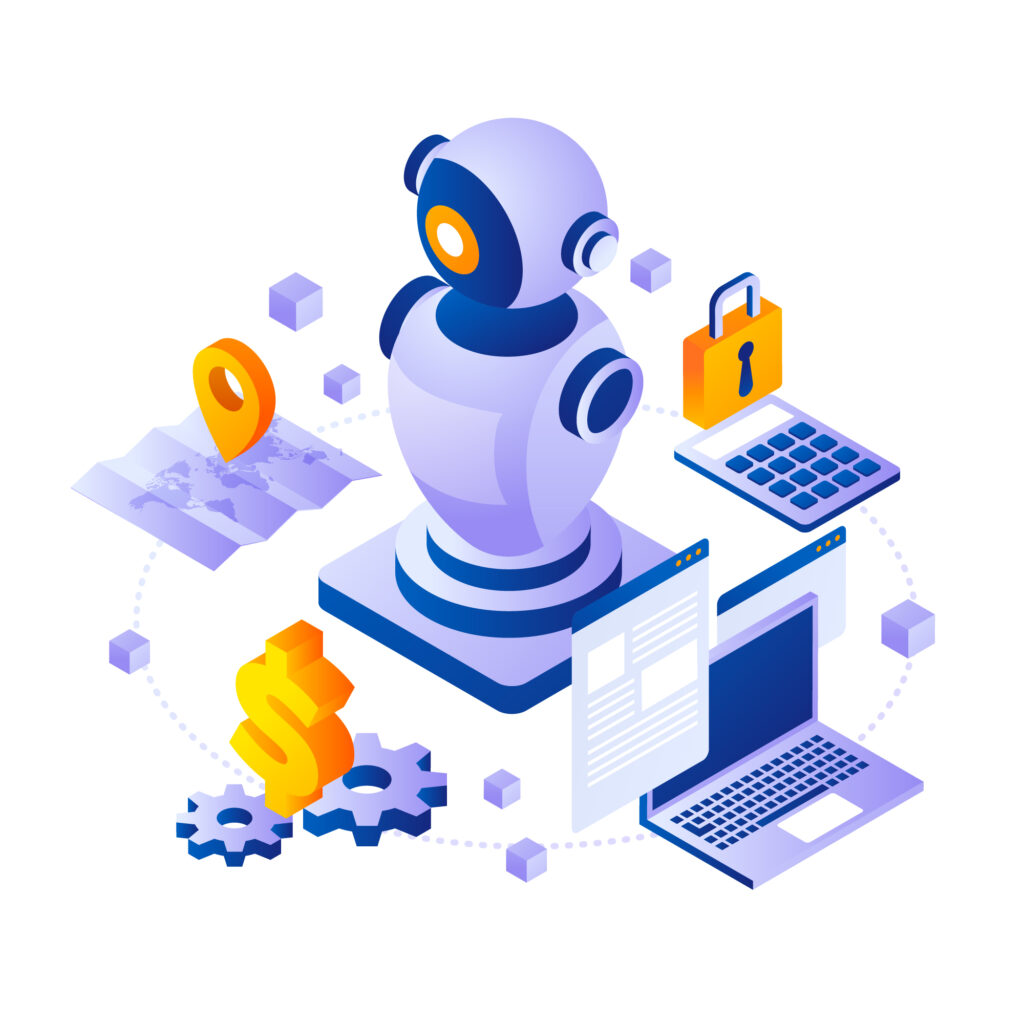What is LLM (Large Language Model Operations) Ops?
LLM Ops or Large Language Model Operations refers to a specialized approach designed to manage, deploy, monitor, and maintain large language models in production environments. As an advanced branch of MLOps, LLM Ops caters specifically to the distinct challenges of working with cutting-edge AI language systems such as GPT models, Google’s Gemini, and Anthropic’s Claude.

Core Definition and Purpose
The central aim of LLM Ops is to streamline the operational aspects of managing large language models while ensuring they meet critical performance benchmarks. These benchmarks include:
- Reliability: Delivering consistent and accurate results.
- Efficiency: Optimizing the use of computational resources to support cost-effective operations.
- Scalability: Supporting adaptability across a wide range of LLM workflows and applications.
By incorporating AI model scalability and fine-tuning processes, LLM Ops allows organizations to harness the full potential of their language models in diverse use cases.
Core Characteristics
1. Massive Scale and Architecture
Large language models stand out due to their sheer scale and robust architecture:
- Parameters: These models are built with billions of neural network parameters, enabling them to process intricate language patterns.
- Architecture: They leverage transformer-based neural networks featuring multiple layers, which enhance their ability to understand and generate text.
- Computational Power: Equipped to handle massive volumes of textual data in parallel, these systems excel at powering diverse LLM workflows efficiently.
2. Training Methodology
The training processes for managing large language models are equally impressive:
- Training Techniques: They use unsupervised and self-supervised learning methods to fine-tune their capabilities.
- Datasets: Trained on colossal datasets, often spanning petabytes of text, these models achieve a deep understanding of complex linguistic structures.
- Data Analysis: Through extensive analysis, they learn intricate patterns, making them adaptable for scalable applications and further fine-tuning LLMs.
Key Characteristics of Large Language Models (LLMs)
1. Training on Vast Text Corpora
Large language models are developed using extensive datasets that often span petabytes, ensuring a broad understanding of linguistic structures. These datasets typically include:
- Books
- Websites
- Academic papers
- Online publications
- A diverse range of textual sources
The training process involves processing trillions of words, enabling these models to recognize intricate language patterns and contexts, making them essential components of modern LLM workflows.
2. Advanced Deep Learning Techniques
Managing large language models requires the integration of sophisticated neural network frameworks, including:
- Embedding Layers: Capture the semantic and syntactic nuances of words.
- Feedforward Layers: Transform input embeddings for further processing.
- Recurrent Layers: Analyze sequential relationships in text.
- Attention Mechanisms: Focus on text segments that are most relevant to the context.
These techniques enhance the scalability of AI models, allowing them to perform complex tasks with precision.
3. Complex Natural Language Processing Capabilities
LLMs excel at a wide range of NLP tasks, showcasing:
- Contextual Understanding: Maintain and interpret context over lengthy text sequences.
- Transfer Learning: Apply existing knowledge to unfamiliar tasks effectively.
- Multilingual Adaptability: Generate and process text in multiple languages.
- In-Context Learning: Quickly adapt to new challenges with minimal fine-tuning.
These capabilities make fine-tuning LLMs and deploying them in real-world applications both efficient and impactful.
Advanced Capabilities of Large Language Models
Large language models are equipped with advanced features that enable them to perform a variety of complex tasks, including:
- Human-like Text Generation: Produce text that mimics human writing with coherence and fluency.
- Language Translation: Seamlessly translate text across multiple languages, leveraging multilingual adaptability.
- Sentiment Analysis: Analyze and interpret the emotional tone of content to provide deeper insights.
- Complex Query Resolution: Accurately answer intricate questions using their extensive training on vast text corpora.
- Content Creation: Generate grammatically correct and contextually relevant content for diverse applications.
These capabilities underline the scalability and efficiency of LLM workflows, making them indispensable for businesses and applications requiring advanced language model operations.
Comprehensive Challenges in Managing Large Language Models

1. Computational and Infrastructure Challenges
Managing large language models comes with significant demands on resources, including:
- Massive Computational Power: These models require extensive processing capabilities.
- High-Performance Hardware: Depend on cutting-edge GPUs or TPUs to handle intensive workloads.
- Costly Infrastructure: Operating and maintaining these systems can be extremely expensive.
- Lengthy Training Times: Training models often takes weeks or even months.
Mitigation Strategies
To address these challenges, organizations can adopt several approaches:
- Leverage cloud computing services to scale resources efficiently.
- Implement model compression techniques to reduce computational demands.
- Partner with research institutions for collaborative advancements.
- Focus on optimizing model architectures to enhance resource efficiency and scalability.
By incorporating these strategies into LLM workflows, businesses can effectively operationalize large language models while overcoming infrastructure-related hurdles.
2. Data Quality and Preprocessing Challenges
Critical Issues in Data Management
Managing large language models involves dealing with significant data-related challenges, including:
- Dataset Complexity: Training datasets often reach petabyte-scale, making them difficult to manage.
- Quality Assurance: Manual checks for data quality are virtually impossible due to the sheer volume.
- Data Redundancy: There’s a risk of contamination from near-duplicate entries in the training data.
- Bias Introduction: Imbalanced datasets may inadvertently introduce biases into the model.
- Data Diversity: Ensuring datasets are representative of a wide range of perspectives and contexts is essential.
Importance of Preprocessing
Effective preprocessing in LLM workflows is critical to minimizing these risks. This includes implementing robust techniques for cleaning, filtering, and augmenting datasets to enhance model performance and ensure scalability in large language model operations.
3. Performance and Reliability Challenges
Technical Limitations in Model Performance
Large language models face several technical hurdles that impact their efficiency and reliability, including:
- High Inference Latency: Delays in generating responses due to computational overhead.+
- Token-by-Token Processing: Sequential processing of text limits speed and scalability in LLM workflows.
- Information Hallucinations: Models may generate inaccurate or nonsensical information.
- Knowledge Updates: Difficulty in incorporating new information into existing training efficiently.
- Low Parallelizability: Challenges in processing multiple tasks simultaneously, which impacts AI model scalability.
Addressing Performance Issues
To ensure effective large language model operations, organizations must invest in optimizing inference pipelines, leveraging distributed computing resources, and integrating mechanisms to verify and update the model’s knowledge dynamically.
4. Ethical and Operational Challenges
Key Concerns in Managing Large Language Models
Operationalizing large language models presents several ethical and practical challenges, including:
- Bias Propagation: Risks of perpetuating biases inherent in training data, which can impact LLM workflows.
- Lack of Interpretability: Difficulty in understanding how models make decisions due to their complex architectures.
- Privacy Risks: Potential exposure of sensitive data within training datasets raises significant security concerns.
- Alignment with Human Values: Ensuring the models’ outputs reflect ethical principles and align with user expectations.
- Societal Impact: Concerns about the unintended consequences of deploying powerful AI systems at scale.
Addressing Ethical Challenges
Effective LLM operations must include rigorous data audits, model transparency initiatives, and alignment techniques to mitigate these risks and promote responsible AI deployment.
5. Fine-Tuning and Adaptation Challenges
Complexities in Model Adaptation
Adapting large language models to specific domains or tasks presents several hurdles, including:
- High Memory Requirements: Fine-tuning these models demands substantial storage and computational resources.
- Computational Inefficiency: The process often requires excessive processing power, impacting overall efficiency in LLM workflows.
- Domain-Specific Nuances: Capturing subtle and specialized knowledge for niche applications is particularly challenging.
- Parameter-Efficient Techniques: The need to develop methods that fine-tune models without altering vast numbers of parameters.
Overcoming Adaptation Challenges
To enhance large language model operations, researchers are exploring innovations such as low-rank adaptation, lightweight training techniques, and hybrid approaches to balance scalability with precision.
Core Practices in LLM Ops

1. Model Fine-Tuning and Adaptation
Fine-tuning and adapting large language models is a cornerstone of effective LLM workflows. Key practices include:
Prompt Engineering Techniques
- Develop precise and context-aware prompts tailored to the specific task.
- Use iterative testing to refine prompt phrasing for improved output quality.
- Use model’s pre-trained knowledge to enhance performance and reliability in large language model operations.
Fine-Tuning Approaches
- Customize pre-trained models to align with unique organizational requirements.
- Train models on specialized, task-specific datasets to address domain-specific nuances.
- Leverage tools like Hugging Face Transformers to optimize models and streamline scalability.
- Ensure model performance aligns with business objectives, enhancing usability and efficiency across applications.
These practices enable businesses to harness the full potential of LLM Ops, ensuring models are both adaptable and high-performing.
2. Data Management Practices
Effective data management is essential for the smooth operation of large language models. Key practices include:
Critical Data Handling Strategies
- First, collect comprehensive datasets from a variety of diverse sources to ensure model versatility.
- Additionally, implement rigorous data cleaning procedures to enhance data quality and minimize errors.
- Next, remove duplicates and noise from datasets to prevent skewed model outputs in LLM workflows.
- Moreover, address missing data effectively to maintain the integrity of training processes.
- It is also crucial to prioritize data privacy and security to protect sensitive information throughout the model’s lifecycle.
- Finally, maintain robust data versioning practices to track and manage changes in datasets.
By following these LLM Ops data management strategies, organizations can ensure that their models are trained on high-quality, secure, and reliable data.
3. Experimental and Optimization Techniques
Performance Optimization Methods
Optimizing the performance of large language models is crucial for effective LLM Ops. Key methods include:
- Conduct systematic hyperparameter tuning to fine-tune model settings for optimal performance.
- Optimize the allocation of computational resources to ensure efficiency and scalability in LLM workflows.
- Implement model pruning and quantization techniques to reduce model size and enhance speed.
- Lower both training and inference costs by refining processes and leveraging resource-efficient strategies.
- Improve overall model efficiency by streamlining workflows and reducing unnecessary complexity.
These LLM Ops techniques help organizations maximize the potential of large language models while ensuring scalability and cost-effectiveness.
4. Deployment and Monitoring
Operational Excellence Practices
To ensure the smooth operationalization of large language models, key deployment and monitoring practices include:
- Develop efficient and streamlined deployment processes for quick and reliable model rollout.
- Implement continuous monitoring systems to track model performance and catch potential issues early in LLM workflows.
- Create automated feedback loops to improve model performance through real-time data and insights.
- Ensure model reliability and optimal performance through ongoing assessment and adjustments.
- Build scalable infrastructure to support the dynamic demands of large language model operations, facilitating smooth model management.
These practices are fundamental for achieving consistent and high-quality performance in LLM Ops, ensuring models are both reliable and scalable over time.
5. Human Feedback Integration
Continuous Improvement Approach
Incorporating human feedback is a key component in refining large language models and improving LLM workflows. The practices include:
- Implement Reinforcement Learning from Human Feedback (RLHF) to guide model adjustments based on real-world interactions.
- Integrate end-user feedback mechanisms to gather valuable insights for continuous model improvement.
- Use real-world data and feedback to refine models iteratively, enhancing performance and adaptability in LLM Ops.
- Focus on improving model accuracy and ensuring contextual relevance to meet user expectations and business objectives.
By embedding human feedback into the operational cycle, organizations can ensure that their models remain aligned with evolving needs and maintain high-quality performance.
Top Tools for LLM Ops

1. Hugging Face
Key Features:
- A comprehensive repository for AI models, with a focus on open-source language models.
- Provides robust libraries for transformers and access to a centralized model hub for researchers.
- Extensive support for tokenization across various languages and smooth dataset integration.
Advanced Capabilities:
- Supports transfer learning for efficient model adaptation.
- Offers a collection of pre-trained models that can be customized easily.
- Enables quick integration of datasets, enhancing the model’s learning capability.
- Promotes community-driven model development, ensuring continuous improvement.
Technical Advantages:
- Compatible with multiple machine learning frameworks.
- Provides efficient techniques for fine-tuning models.
- Facilitates fast and flexible model customization for diverse LLM workflows.
- Supports various Natural Language Processing (NLP) tasks, making it versatile for different applications in LLM Ops.
2. OpenAI API
Core Characteristics:
- Offers access to advanced GPT models with cloud-based infrastructure for efficient inference.
- Provides scalable language processing capabilities, ideal for enterprise-grade deployment.
- Well-documented with comprehensive support for integrating into various applications.
Key Functionalities:
Text generation, code completion, language translation, sentiment analysis, and advanced prompt engineering are key capabilities of the OpenAI API.
3. LangChain
Primary Features:
- A framework designed for building applications with large language models.
- Supports the creation of complex workflows and advanced prompt chaining.
- Flexible integration with various models and model providers for customized LLM workflows.
Technical Capabilities:
- Modular prompt engineering and effective context management.
- Supports multi-model interaction and custom AI agent development.
- Streamlines workflow automation, ensuring more efficient LLM operations.
4. Text Generation Inference (TGI)
Specialized LLM Deployment Tool:
- Optimized for serving large language models with high performance.
- Supports multi-GPU inference, reducing computational overhead.
- Designed for continuous batching, making it highly efficient for high-demand environments.
5. E2E Cloud Platform
LLM Infrastructure Features:
- Provides AI-accelerated cloud computing, enhancing scalability and performance.
- Offers scalable computational resources specifically designed for machine learning and AI applications.
- Cost-effective model training solutions, ensuring affordability for large-scale LLM Ops.
- Comprehensive developer support ensures smooth integration and deployment of models in production environments.
Future of Large Language Model Operations (LLM Ops)

Key Emerging Trends
1. Advanced Model Capabilities
Technological Innovations:
- Fact-checking with the integration of real-time data to enhance model accuracy and reliability.
- Models that can self-verify the content they generate, improving trust and reducing errors.
- Access to external information sources for LLM workflows, enabling models to pull in data dynamically.
- Ability to provide citations and references, making generated content more reliable and verifiable.
Significant improvements in contextual understanding, allowing models to handle more complex queries and deliver more accurate responses.
2. Model Scaling and Specialization
Emerging Characteristics:
- Models with massive parameters (ranging from 1.8 trillion to 2 trillion), offering unprecedented computational power and performance.
- Domain-specific fine-tuning for enhancing model relevance and applicability across different industries and use cases.
- Specialized models being developed for areas such as:
1: Healthcare (e.g., Med-PaLM 2), improving diagnostic and treatment recommendations.
2: Legal domains, providing precise legal document analysis and case predictions.
3: Scientific research, assisting in data analysis, hypothesis generation, and discovery.
4: Radiology-specific applications, enhancing medical imaging analysis and interpretation.
These emerging trends represent the future of LLM Ops, where models become more specialized, efficient, and reliable in their application across various industries.
Technological Advancements
Deployment Strategies
- Real-time inference capabilities enable faster decision-making by processing data instantly.
- Edge computing integration reduces reliance on centralized cloud infrastructure, improving responsiveness.
- Models designed for low-latency responses provide quicker output, enhancing user experience.
- Reduced cloud infrastructure dependency allows for more scalable and cost-effective solutions in LLM Ops.
Performance Optimization
- Significant improvements in computational efficiency optimize the use of available resources.
- Efforts to reduce energy consumption make models more sustainable and cost-effective.
- Enhanced processing speed ensures rapid model inference, improving real-time capabilities.
- The introduction of adaptive learning mechanisms helps models evolve with minimal intervention.
Ethical and Responsible Development
Critical Focus Areas:
- Efforts toward bias reduction aim to create more fair and equitable models.
- Misinformation prevention is critical for ensuring that generated content is accurate and trustworthy.
- Transparent AI operations enhance accountability and trust in LLM workflows.
- Incorporating reinforcement learning from human feedback helps models improve based on real-world interactions.
- The establishment of robust ethical guidelines ensures that model development is aligned with societal values and norms.
Future Application Domains
Potential Implementation Areas:
- Healthcare diagnostics, where models can assist in analyzing medical data and generating recommendations.
- Financial analysis, enabling predictive modeling for stock market trends, risk assessment, and investment strategies.
- Predictive decision support to guide decision-making processes in industries such as manufacturing, logistics, and retail.
- Development of personalized user experiences, where LLM Ops are used to create tailored content, services, and interactions.
- Use of LLMs for complex problem-solving, assisting in research, design, and innovative problem resolution in various sectors.
[Want to learn more about Large Language Models? Click here to reach us.]
Conclusion
Effectively operationalizing large language models (LLMs) through LLM Ops is crucial for organizations aiming to harness the full potential of these advanced AI systems. By focusing on key areas such as model fine-tuning, data management, and performance optimization, businesses can ensure that their LLMs are not only efficient and reliable but also scalable to meet diverse use cases.
Overcoming challenges like computational power, data quality, and ethical considerations requires a comprehensive strategy that includes advanced deployment techniques, continuous model monitoring, and the integration of human feedback.
As LLM workflows continue to evolve, organizations must stay ahead by leveraging cutting-edge tools and methodologies that enhance model capabilities and performance. By adopting these best practices and staying aligned with the latest advancements in LLM Ops, businesses can unlock the true potential of LLMs in fields ranging from healthcare to finance, creating more personalized, efficient, and impactful solutions for their users.
For organizations seeking expert support in deploying and operationalizing their LLM models, Bobcares offers specialized AI development and support services. From custom AI model development to fine-tuning and performance optimization, Bobcares experienced team ensures seamless integration and management of LLMs, enabling businesses to maximize their AI capabilities. With Bobcares’ AI expertise, companies can confidently scale their AI initiatives, overcome operational challenges, and drive innovation across industries.
In conclusion, a well-structured LLM Ops framework not only ensures operational excellence but also fosters innovation, allowing organizations to scale and adapt their AI-driven capabilities with confidence.







0 Comments